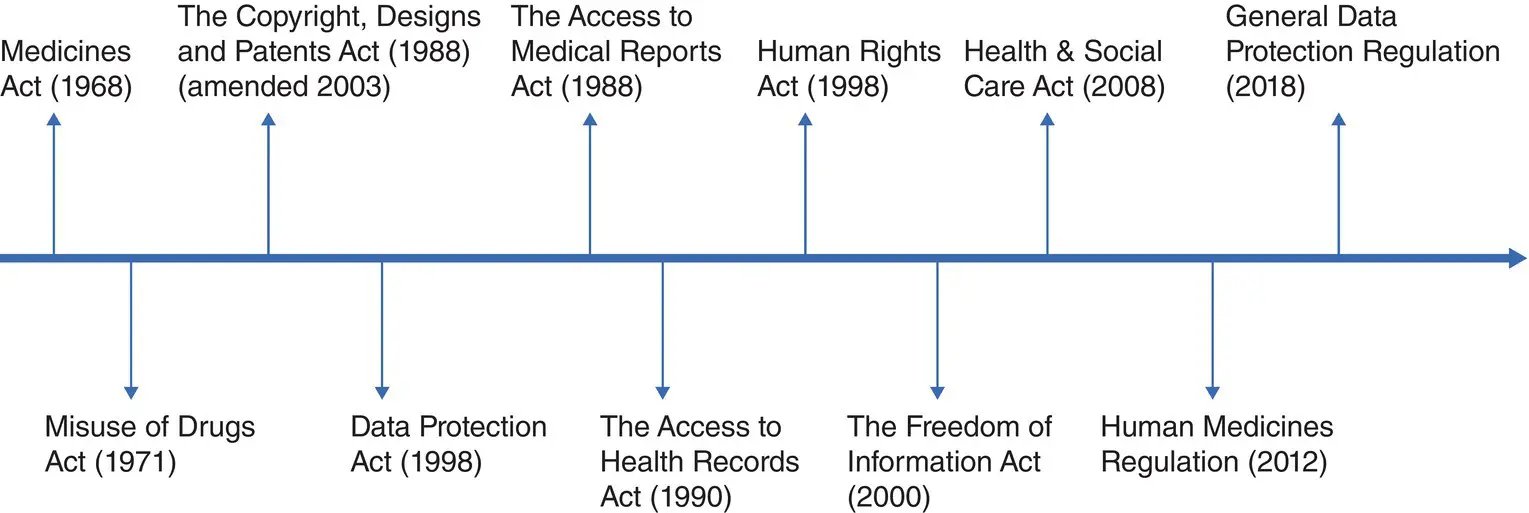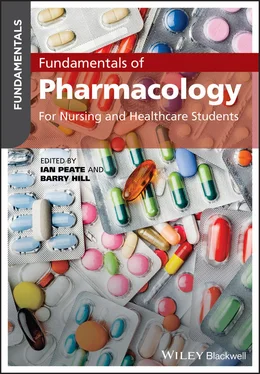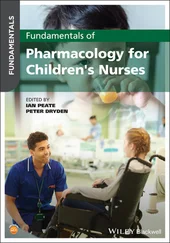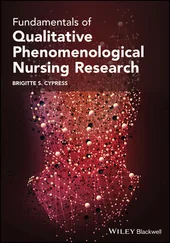Laws exist to protect patients and the public. Recent years have seen changes in the culture within healthcare in the United Kingdom (UK), with a notable rise in litigation. Unlike some countries, where there is a ‘no‐blame’ process for medico‐legal cases, the UK system operates a ‘fault criterion’ whereby fault has to be established for the complainant to prove a case. Clinical negligence claims quadrupled between 2007 and 2017 (National Health Service Improvement (NHSI), 2019) leading to an exponential growth in the number of cases involving healthcare professionals who are forced to defend their practice in a court setting. Failing to monitor a particular drug therapy, failure to recognise the prescription of a contraindicated drug, failure to warn patients of adverse effects and neglecting to protect a patient from harm are all examples of pharmacology cases whereby blame could be laid. As our professional remit grows, so does the legal expectation. Given the amount of resources and information health professionals have access to, the defence of lack of knowledge is wholly insufficient.
Laws originate from two sources: Common Law, sometimes referred to as ‘Case’ Law, and Statute Law known as ‘Acts of Parliament’.
Common Law or Case Law refers to cases that are tried in courts of law, whereby a judge will give rule to a set of legal precedents. Common Law is constantly changing due to the ways in which judges interpret the law and use their knowledge of legal precedent and common sense as well as applying the facts of the case. Common Law safeguards that the law remains common throughout the land, and can be divided into either Criminal or Civil Law.
Statute Law or Acts of Parliament is law which is written down and codified into law. Acts begin as bills which then become Acts once the bills have been heard and possibly amended in the House of Commons and House of Lords before receiving ‘Royal Assent’. The Acts can either be private or public. Private Acts may apply to detailed locations within the UK or they may grant specific powers to public bodies, such as local authorities. Public Acts are the laws that affect the whole of the UK or one or more of its constituent countries: England, Wales, Scotland and Northern Ireland.
Healthcare and the law in the UK are strongly entwined. The laws created to protect the health of an individual can be seen when under the care of the hospital and its medical team, through to public health and the legal requirements of health and safety. Across the UK, the laws and charters that exist have been created to ensure that the rights and health interests of the individual are protected throughout the duration of their medical care. Healthcare professionals therefore have a legal duty to act with reasonable care when providing services. This ‘Duty of Care’ is defined as a ‘legal obligation imposed on individuals or organisations that they take reasonable care in the conduct of acts that could foreseeably result in actionable harm to another’ (Samanta and Samanta, 2011, p. 89). This includes prescribing drug therapy and drug administration, as well as consent, negligence and confidentiality – to name but a few. Failure to act with reasonable care could result in healthcare staff being held responsible in both criminal and civil courts.
Clinical considerations: The Bolam test
The majority of litigation in relation to medical malpractice comes under the category of negligence.
When considering cases of clinical negligence, courts will assess whether the health professional or organisation in question acted in line with the practice accepted as proper by a body of health professionals specialising in the specific field under scrutiny. This is known as the ‘Bolam’ test. The case (Bolam v Friern Hospital Management Committee, 1957), involved a patient who had suffered a fractured hip during electroconvulsive therapy (ECT). No relaxant or other restraint had been given to the patient in preparation for the treatment. The case explored this, along with the information the patient had been offered. The question was asked of a group of similar professionals and it was assessed that the practitioner had not been negligent as he had acted in accordance with accepted practice at that time. This set the standard and the Bolam test is now utilised in cases of negligence as a benchmark for whether the professional concerned acted in a reasonable manner. However, a judge can still make the assessment that the body of opinion is not reasonable.
There are several Acts or Laws that affect the provision of medicines which are illustrated on this timeline (see Figure 3.1).

Figure 3.1 Acts or laws affecting the provision of medicines.
Ethical principles and theories
Making ethical decisions is about deciding on the right way to act in a given situation; this is underpinned by the moral values held by an individual or group. In 1979, Beauchamp and Childress (1957) developed a four‐point theoretical framework to be used as a method of analysing ethical dilemmas in clinical medicine. The framework included beneficence, non‐maleficence, autonomy and justice. These principles remain in healthcare along with the addition of a further two principles. Today the following ethical principles apply:
beneficence
non‐maleficence
autonomy
justice
veracity
fidelity.
The principles outlined here are commonly felt to underpin judgments that health professionals believe to be right. First, beneficence , whereby we should endeavour to do good. This extends to protecting others and defending their rights, preventing harm and helping others. It is argued by some, such as Pellegrino (1988), that beneficence is the only fundamental principle within healthcare ethics and that the sole purpose of medicine should be to heal. By this assumption, medicines such as contraception, and treatments for conditions such as infertility, erectile dysfunction or aesthetics, could fall beyond its purpose. However, the notion of ‘healing’ is complex and dynamic, referring to more than just the rectifying of an immediate physical ailment or condition. Contraception, fertility treatment and plastic surgery support health and wellbeing in a myriad of direct and indirect ways, physically as well as psychologically, which is why the endeavour of beneficence is not as straight forward as it would first appear.
In practice, in order to do good, medical interventions and treatments can often carry a risk of harm and therefore require justification. Non‐maleficence means that by our actions, we should do others no harm. The principle of non‐maleficence therefore cannot be absolute and must be balanced against beneficence. For example, when treating patients with cytotoxic chemotherapy drugs for cancer, we balance beneficence (the potential to do good and eradicate the cancer) against non‐maleficence and the risk of the chemotherapy itself to cause the patient's condition to deteriorate, possibly leading to death.
It is also generally believed that people should have the right to make decisions about what is right for them, provided they have sufficient capacity or understanding to do so. This principle is a respect for the autonomy of the individual and relates to enabling patients to make self‐determined decisions regarding their care. Consent to treatment is a fundamental component of ethical patient care in addition to a legal requirement. It involves a genuine agreement (verbal or written) to receive treatment under circumstances where the patient has been assessed as competent, has been fully informed and where there is no undue pressure exerted (Herring, 2018). Beauchamp and Childress (1957) have argued that no decision can be truly autonomous, as patients rarely have the relevant knowledge to hold a full understanding of treatment options and, as such, are vulnerable to the coercion of health professionals who feel that they are best placed to make decisions in the interests of their patients (paternalism). However, increasingly patient groups have sought to increase autonomy for patients through changes in policies and practices which decrease the potential for coercion and increase patients’ freedom to act (Williamson, 2010). An example of this has been seen in recent years, as a greater emphasis has been placed on models of shared decision‐making between health professionals and patients. The shared decision‐making approach seeks a balance between paternalistic care and the informed consent approach. Paternalistic care is where decisions about care are made by health professionals (predominantly doctors) and patients passively receive the care prescribed. This model does not factor in patients' own values and beliefs and can lead to patients feeling greater distress where there is a negative outcome (Stewart and Brown, 2001). The informed consent approach offers patients greater responsibility and will often involve health professionals offering patients all of the information required and then leaving them to make the decision unsupported. This can lead to patients feeling abandoned and unsure, creating anxiety and distrust (Corrigan, 2003; Deber et al., 2007). The shared decision‐making approach involves health professionals and patients working together to devise a plan of care that is in line with the best available evidence as well as the values and beliefs of the individual patient, aligning to the principle of true autonomy.
Читать дальше













